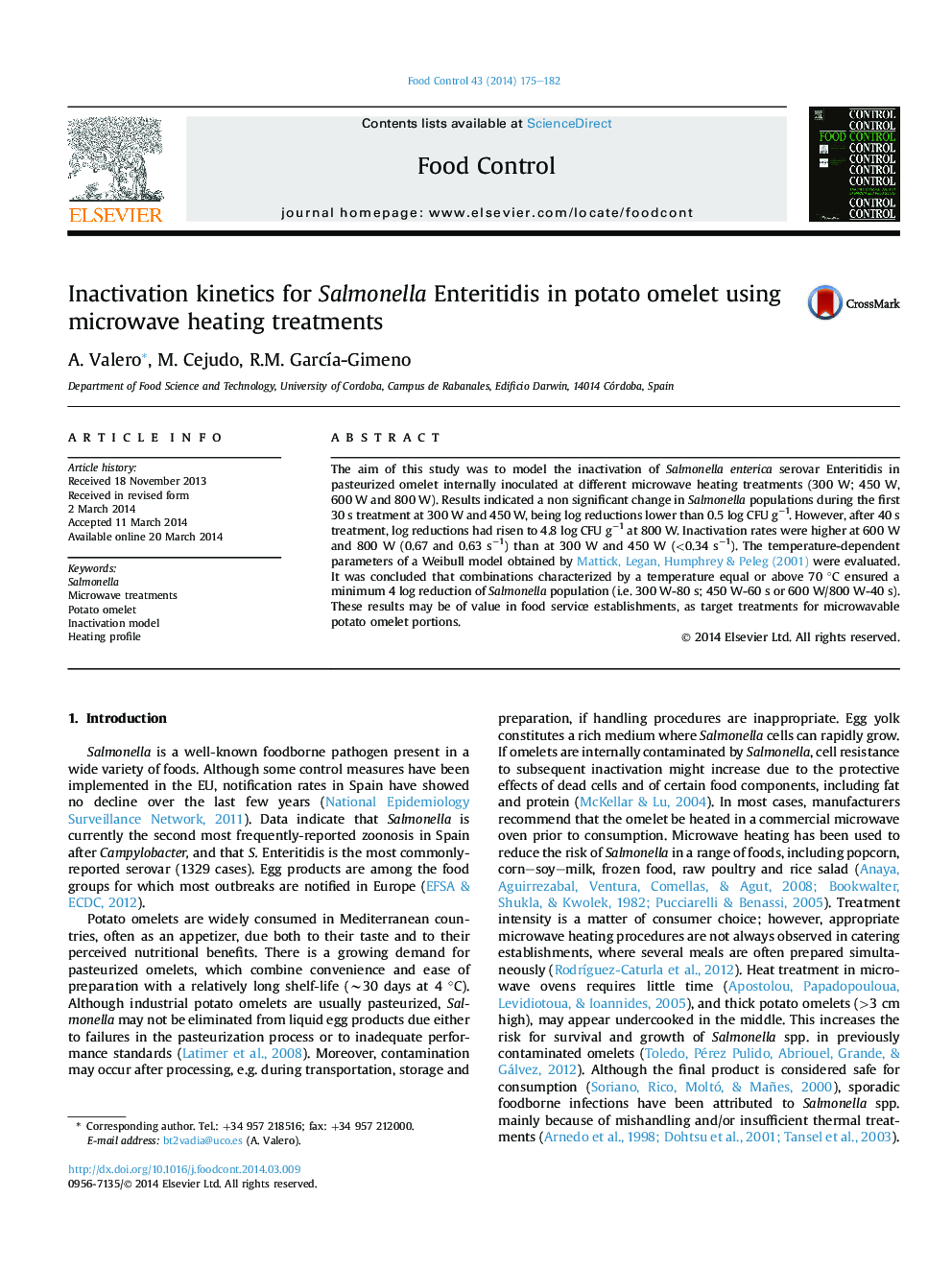| Article ID | Journal | Published Year | Pages | File Type |
|---|---|---|---|---|
| 6391786 | Food Control | 2014 | 8 Pages |
â¢Salmonella inactivation was appropriately described by a log-linear + shoulder model.â¢Temperature dependency was assessed through the application of a non isothermal Weibull model.â¢A reduction of greater than 4-log CFU gâ1 of Salmonella population in potato omelet was observed at 800 W/40 sec.â¢An increase of core temperature (>60 °C) was necessary to produce inactivation at 800 W.â¢These results can be considered in foodservice establishments as target treatments of microwavable potato omelet portions.
The aim of this study was to model the inactivation of Salmonella enterica serovar Enteritidis in pasteurized omelet internally inoculated at different microwave heating treatments (300 W; 450 W, 600 W and 800 W). Results indicated a non significant change in Salmonella populations during the first 30 s treatment at 300 W and 450 W, being log reductions lower than 0.5 log CFU gâ1. However, after 40 s treatment, log reductions had risen to 4.8 log CFU gâ1 at 800 W. Inactivation rates were higher at 600 W and 800 W (0.67 and 0.63 sâ1) than at 300 W and 450 W (<0.34 sâ1). The temperature-dependent parameters of a Weibull model obtained by Mattick, Legan, Humphrey & Peleg (2001) were evaluated. It was concluded that combinations characterized by a temperature equal or above 70 °C ensured a minimum 4 log reduction of Salmonella population (i.e. 300 W-80 s; 450 W-60 s or 600 W/800 W-40 s). These results may be of value in food service establishments, as target treatments for microwavable potato omelet portions.
